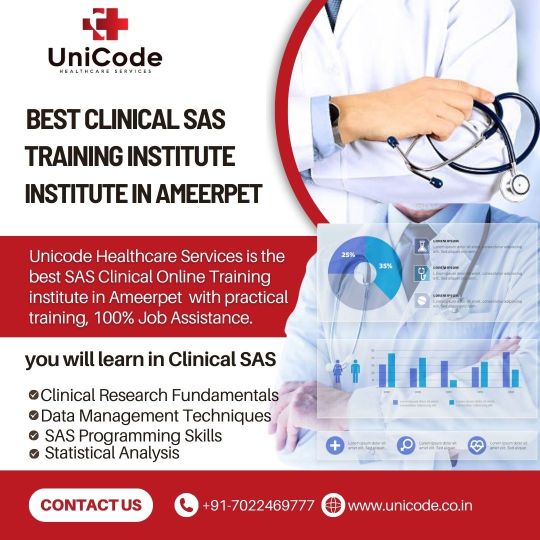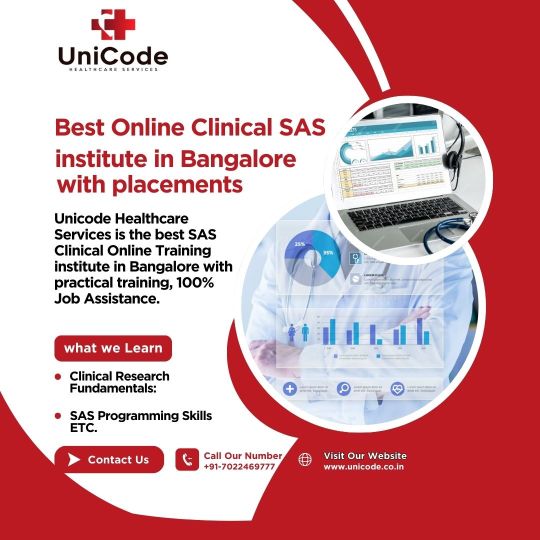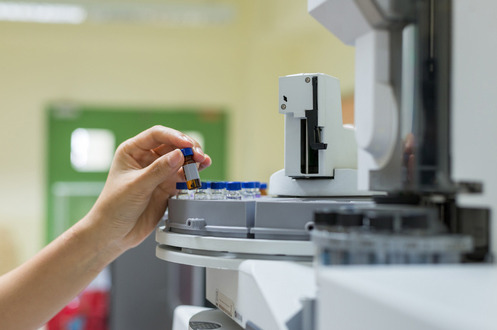#Clinical Data Analysis
Explore tagged Tumblr posts
Text
Artificial intelligence is being embedded in the clinical trials field in a way that can benefit the trial process as a whole. Through the use of AI, the researchers and pharmaceutical industries will be in a position to counter many challenges of traditional clinical trials; which will enable better delivery of treatments in the market.
#Pharmaceutical Development#Clinical Phases of Drug Development#Clinical Trial Organization#Clinical Data Analysis#pharmaceutical Clinical Trials
1 note
·
View note
Text
Delve into the crucial transformation of Pharmacovigilance reports, tracing their evolution from the original Periodic Safety Update Report (PSUR), which focused on accumulating safety data, to the more advanced Periodic Benefit-Risk Evaluation Reports (PBRERs).
#Periodic Safety Update Report (PSUR)#Periodic Benefit-Risk Evaluation Report (PBRER)#Pharmacovigilance reports#Drug safety reporting#Risk-benefit analysis in pharmacovigilance#ICH E2C(R2) guidelines#Safety reporting in clinical trials#Post-marketing surveillance#Regulatory safety requirements#Evolution of pharmacovigilance#Global drug safety standards#Lifecycle safety data#PBRER implementation#Regulatory compliance in pharmacovigilance#Pharmaceutical safety reporting
0 notes
Text
The Future of Healthcare: AI-Driven Insights for Smarter Decision-Making

The healthcare industry is undergoing a profound transformation, driven by the need for greater efficiency, accuracy, and patient-centered care. Data plays a crucial role in this shift, enabling healthcare organizations to optimize clinical workflows, enhance patient care, and improve operational efficiency. However, managing and analyzing large volumes of data requires advanced solutions that ensure accuracy, security, and real-time decision-making.
Artificial intelligence is reshaping how healthcare providers collect, analyze, and use data. AI-driven analytics help predict patient needs, streamline hospital operations, and support early disease detection. The ability to transform raw data into actionable insights allows healthcare professionals to provide better care while reducing costs.
The Role of AI in Healthcare Data Management
Modern healthcare organizations generate vast amounts of data, including electronic health records, medical imaging, patient histories, and real-time monitoring information. AI-powered healthcare data analytics solutions process these large datasets identify trends and provide meaningful insights that support clinical and administrative decision-making.
Predictive analytics enables hospitals to anticipate admission surges, allocate resources effectively, and reduce readmission rates. AI models analyze historical patient data, detect risk factors, and assist clinicians in diagnosing diseases early. By integrating AI into healthcare systems, medical professionals can make faster and more accurate decisions, leading to improved patient outcomes.
Managing Medical Data with AI-Driven Solutions
One of the primary challenges in healthcare is ensuring efficient and secure data management. Medical data management services help organize, store, and retrieve patient information while maintaining compliance with industry regulations.
Cloud-Based Storage: Healthcare organizations increasingly use cloud solutions to store and manage patient records. This approach ensures secure access to real-time data while adhering to regulatory standards such as HIPAA.
Interoperability Solutions: AI-driven platforms facilitate seamless data exchange between hospitals, clinics, and research institutions. Interoperability enhances collaboration among healthcare professionals and ensures that patient information is accessible across different systems.
Data Security and Compliance: Protecting patient information is critical in healthcare. AI-powered security solutions monitor data access, detect potential threats, and ensure compliance with evolving regulations. These measures help prevent breaches and safeguard sensitive medical records.
Clinical Data Analysis and Reporting for Better Decision-Making
Accurate reporting and analysis are essential for both patient care and regulatory compliance. AI enhances clinical data analysis and reporting by automating data collection, standardizing records, and providing real-time insights.
AI-Powered Dashboards: Hospitals and healthcare systems use AI-driven dashboards to track patient flow, resource utilization, and treatment success rates. These tools help administrators make informed decisions that improve efficiency and patient satisfaction.
Risk Prediction Models: Advanced analytics detect high-risk patients by analyzing EHRs, lab results, and genetic data. This information allows healthcare professionals to implement preventive measures and reduce hospitalization rates.
Regulatory Compliance Reporting: AI simplifies compliance reporting by automating data aggregation and analysis. This reduces manual errors and ensures that healthcare providers meet industry standards.
AI and Personalized Medicine
Personalized medicine tailors' treatment plans to individual patients based on genetic information, medical history, and lifestyle factors. AI-driven healthcare data analytics solutions analyze vast amounts of patient data to create customized treatment approaches.
By using AI to assess genetic markers and predict disease progression, healthcare providers can develop targeted therapies that improve treatment effectiveness while minimizing side effects. Precision medicine is especially beneficial in oncology, where AI helps identify the most effective treatments for different types of cancer.
AI also supports pharmaceutical research by analyzing clinical trial data, identifying potential drug interactions, and accelerating the approval process for new treatments. These advancements contribute to the development of more effective therapies and improve overall patient outcomes.
Applications of AI in Healthcare Data Analytics
Healthcare organizations worldwide are adopting AI-driven solutions to improve efficiency and enhance patient care.
Predicting Patient Deterioration: AI-powered monitoring systems in intensive care units (ICUs) analyze vital signs and detect early warning signs of deterioration. Clinicians can intervene before a patient’s condition worsens.
Reducing Diagnostic Errors: AI enhances radiology by identifying abnormalities in medical images such as MRIs and CT scans. Early and accurate diagnoses lead to faster treatment initiation.
Optimizing Hospital Operations: AI analyzes hospital workflows, predicts peak admission times, and improves staff allocation. This reduces patient wait times and enhances the overall healthcare experience.
Managing Chronic Diseases: AI-driven analytics platforms help track chronic conditions like diabetes and hypertension. Personalized treatment recommendations improve disease management and patient adherence to care plans.
Challenges in AI-Driven Healthcare Data Management
While AI offers significant benefits, its implementation in healthcare requires overcoming certain challenges.
Data Privacy & Security: Ensuring the protection of sensitive patient data remains a priority. AI-driven encryption and security monitoring help mitigate cybersecurity risks.
Integration with Existing Systems: Many healthcare organizations still use legacy IT systems. Implementing AI-driven solutions requires seamless integration with existing infrastructures.
Ethical Considerations: The use of AI in healthcare raises ethical concerns related to patient consent, bias in AI models, and the transparency of decision-making processes. Establishing clear guidelines is essential for responsible AI adoption.
The Future of AI in Healthcare Data Analytics
AI continues to evolve, bringing new opportunities for innovation in healthcare data analytics solutions and clinical data analysis and reporting. Emerging trends include:
Real-Time Predictive Analytics: AI will enable healthcare providers to make real-time decisions based on continuously updated patient data. This will improve emergency care and critical interventions.
AI-Powered Virtual Assistants: Intelligent chatbots and virtual assistants will provide instant access to patient records, clinical guidelines, and drug interactions, supporting healthcare professionals in their daily tasks.
Blockchain for Data Security: Combining AI with blockchain technology will enhance data security and ensure the integrity of medical records.
Automated Clinical Trials: AI-driven platforms will optimize clinical trials by analyzing patient eligibility, monitoring trial progress, and identifying potential treatment breakthroughs.
Conclusion
AI is transforming medical data management services by improving the way healthcare organizations collect, store, and analyze patient information. AI-driven clinical data analysis and reporting enhances decision-making, leading to better patient outcomes and more efficient hospital operations. Healthcare providers that integrate AI-powered healthcare data analytics solutions can improve accuracy, optimize workflows, and enhance patient care.
As the healthcare industry continues to advance, AI will play an increasingly vital role in managing data, predicting patient needs, and driving medical innovation. Healthcare organizations that invest in AI-driven solutions will be better equipped to navigate challenges, streamline operations, and improve patient experiences.
#healthcare data analytics solutions#medical data management services#clinical data analysis and reporting
0 notes
Text
The integration of artificial intelligence (AI) into medicine is profoundly transforming practices, and this raises important questions about the ability of geriatricians and general practitioners to adapt.
Here is an analysis of the issues
Growing complexity of medicine with AI
Preventive and predictive medicine
AI can analyze huge amounts of data to identify individual risks and predict disease occurrence.
This requires a deep understanding of algorithms and their interpretation.
Diagnosis
AI helps in interpreting medical images, analyzing biological data and detecting complex patterns.
This requires an ability to validate and integrate AI results into the clinical context.
Therapeutic
AI personalizes treatments based on individual patient characteristics.
This involves knowledge of AI-based therapeutic options and an ability to monitor their effectiveness.
Capacity of geriatricians and general practitioners
Continuing education
Continuing education is essential to keep physicians up to date with advances in AI and its applications in medicine.
Interdisciplinary collaboration
Collaboration with AI specialists, data scientists and other healthcare professionals is crucial for effective use of AI.
Decision support tools
AI can provide decision support tools to support physicians in interpreting data and making clinical decisions.
Specificities of geriatrics
Geriatrics, by its holistic nature, is particularly concerned with the management of multiple pathologies and fragility.
AI can be a valuable asset in synthesizing complex data and personalizing care plans.
The role of the general practitioner
The general practitioner, through regular monitoring of the patient, is on the front line to detect changes and refer to specialists.
AI can help refine its diagnosis and monitoring.
In summary
AI represents a challenge, but also an opportunity to improve the care of elderly patients.
Continuing education, interdisciplinary collaboration and the use of decision support tools are essential to enable geriatricians and general practitioners to adapt to this evolution.
General practitioners and geriatricians will have a key role in using AI as a decision-making tool.
Go further
#Adapting Doctors to AI#Algorithms#Biological data analysis#Interdisciplinary collaboration#Increasing complexity#AI-assisted diagnosis#Health data#Continuing education#Continuing medical education#Fragility#Geriatrics and AI#Medical imaging#Integration into the clinical context#Artificial Intelligence (AI) in Medicine#Clinical interpretation#Interpretation of algorithms#General medicine and AI#Predictive medicine#Preventive medicine#Decision support tools#Personalization of treatments#Polypathology#Medical decision making#Role of the general practitioner#Specificities of geriatrics#Patient monitoring#Monitoring effectiveness#Personalized therapy#Validation of AI results
0 notes
Text
youtube
#Global oncology#clinical trials#cancer research#international collaboration#oncology innovation#cancer care equity#globalization in oncology#emerging markets#cancer therapy development#international clinical trials#oncology infrastructure#regulatory challenges#cancer epidemiology#clinical research trends#oncology data analysis#global cancer care#medical collaboration#cancer treatment access#oncology breakthroughs#cancer disparities.#Youtube
0 notes
Text




#Best Clinical SAS Training Institute in Hyderabad#Unicode Healthcare Services stands out as the top Clinical SAS training institute in Ameerpet#Hyderabad. Our comprehensive program is tailored to provide a deep understanding of Clinical SAS and its various features. The curriculum i#analytics#reporting#and graphical presentations#catering to both beginners and advanced learners.#Why Choose Unicode Healthcare Services for Clinical SAS Training?#Our team of expert instructors#with over 7 years of experience in the Pharmaceutical and Healthcare industries#ensures that students gain practical knowledge along with theoretical concepts. Using real-world examples and hands-on projects#we prepare our learners to effectively use Clinical SAS in various professional scenarios.#About Clinical SAS Training#Clinical SAS is a powerful statistical analysis system widely used in the Pharmaceutical and Healthcare industries to analyze and manage cl#and reporting.#The program includes both classroom lectures and live project work#ensuring students gain practical exposure. By completing the training#participants will be proficient in data handling#creating reports#and graphical presentations.#Course Curriculum Highlights#Our Clinical SAS course begins with the fundamentals of SAS programming#including:#Data types#variables#and expressions#Data manipulation using SAS procedures#Techniques for creating graphs and reports#Automation using SAS macros#The course also delves into advanced topics like CDISC standards
1 note
·
View note
Text
The Role of Data Analytics in Clinical Trial Design and Analysis

What function does data analysis play in clinical trials? Can R and other technologies be used to improve clinical trial data analysis? Is it possible to use big data analysis in clinical trials? Experts would undoubtedly answer yes to all of these questions.
Clinical trials have changed dramatically in the recent decade, with significant new advances in immunotherapy, stem cell research, genomics, and cancer therapy, to name a few. Simultaneously, there has been a shift in the implementation of clinical trials as well as the process of discovering and producing required medications.
Researchers acquire faster insights through the review of databases of real-world patient information and the production of synthetic control arms, to name a few instances of the expanding demand for clinical trial data analysis.
In this instance, they can also assess medication performance after regulatory approval. This has reduced the expense and time associated with studies, while also reducing the total burden on patients and allowing for shorter medication go-to-market timetables.
What is driving data analysis in clinical trials?
AI (artificial intelligence) and ML (machine learning) are driving clinical trial data analysis, allowing for the gathering, analysis, and creation of insights from huge volumes of real-time data at scale, which is far quicker than manual techniques.
The analysis and processing of medical imaging data for clinical trials, as well as data from other sources, is allowing process innovation while also aiding the discovery processes in terms of speeding up trials, go-to-market methods, and launches.
Data volumes have skyrocketed in recent years, thanks to greater wearable usage, genomic and genetic understanding of individuals, proteomic and metabolomic profiles, and complete clinical histories obtained from electronic health records.
According to reports, the global healthcare business generates 30% of the world's data volumes. The CAGR (compound annual growth rate) for healthcare data will also reach 36% by 2025. From 2016 to 2020, the volume of patient data in healthcare systems has increased by a stunning 500%.
Data analysis in clinical trials- What else should you note?
Here are a few factors that are worth noting:
AI-based solutions have been able to use massive amounts of data while curating and storing it in non-standard forms. Machine learning enables the detection of data patterns in the absence of any prior preconceptions.
New AI technologies are likely to have a significant impact on medication research and clinical trials. According to Morgan Stanley Research, the use of ML and AI might result in 50 additional novel cures over the next ten years, turning into a market worth more than $50 billion. ML is already being used in conjunction with statistical analysis to glean insights from massive real-world data warehouses and clinical histories.
Clinical trial design software and data modeling approaches are already being employed extensively, from discovering laboratory indicators for forecasting the possibility of complicated syndromes in patients of various categories to researching and comprehending clinical risk aspects.
Life sciences organizations are utilizing AI technologies to ensure that clinical trials generate regulatory-quality data, as well as classifying and sorting information entry issues, inconsistencies, outliers, and other misreported but adverse effects in order to expedite drug approval procedures.
Synthetic control arm development
When considering the creation of synthetic control arms, the relevance of data analysis in clinical trials becomes further clearer. Clinical drug research and testing might be accelerated while improving success rates and clinical trial designs.
Synthetic control arms may aid in overcoming patient classification issues and shortening the time necessary for medical therapy development. It may also improve patient recruitment by alleviating worries about receiving placebos and allowing for better administration of varied and large-scale trials.
Synthetic control arms use both historical clinical trials and real-world data to mimic patient control groups, eliminating the need for patients to receive placebo treatments that may be harmful to their health. It may have a detrimental influence on patient outcomes and trial enrollment.
The strategy may be more effective for uncommon diseases with smaller patient populations and shorter lifespans due to the disease's aggressive nature. Using such technologies for clinical trials and bringing them closer to end-patients may considerably reduce the overall hassles of going to research locations/sites, as well as the issue of consistent testing.
ML and AI for better discovery of drugs
For physicians, ML and AI may enable faster analysis of data sets obtained earlier and at a faster rate, resulting in improved reliability and efficiency. The incorporation of artificial intelligence in clinical trial design for synthetic control arms into conventional research will open up new avenues for medication development transformation.
As the number of data sources increases, such as health apps, personal wearables and other devices, electronic medical records, and other patient data, these may become the safest and quickest mechanisms for tapping real-world data for better research into ailments with large patient populations.
Researchers may attain larger, more homogeneous patient groups while still gaining critical insights. Here are some other items to consider:
ML and AI tools may aid in the discovery of crucial insights that would otherwise take a large number of hours for humans. They can produce findings in a matter of minutes.
Larger pharmaceutical companies may have several active studies with multiple databases. There is a greater requirement for efficient data analysis and management when there are several data points. Otherwise, data mismanagement might lead to costly blunders.
These tools may be used by researchers to quickly discover crucial trends and potential trial-related issues in real-time.
In Summation
Data analysis allows for the prediction of clinical trial outcomes for novel drugs. All stakeholders benefit from faster and more precise results/predictions, as well as superior risk and reward estimates.
Researchers may construct clinical trials more successfully with improved visibility into drug development risks, broadening patient selection criteria and quickly sorting through numerous aspects at the same time.
Data analytics is allowing for better decision-making throughout the drug development process, while also improving overall clinical trial efficiency through predictive modeling, discovering new possible candidate molecules for effective medication development with more confidence.
Companies may give real-time reactions to clinical data insights via automation and big data, while also generating more efficient trials and significantly reducing trial duration.
Clinical trial outcomes are important performance indicators, at least in the eyes of firms and investors. They are also the start of cooperation between patients, groups, and the broader healthcare industry. As a result of the aforementioned factors, there is an obvious demand for big data analysis in clinical trials.
0 notes
Text
Adapting Hartigan & Wong K-Means for the Efficient Clustering of Sets1

This paper proposes an algorithm, named HWK-Sets, based on K-Means, suited for clustering data which are variable-sized sets of elementary items. An example of such data occurs in the analysis of medical diagnosis, where the goal is to detect human subjects who share common diseases so as to predict future illnesses from previous medical history possibly. Clustering sets is difficult because data objects do not have numerical attributes and therefore it is not possible to use the classical Euclidean distance upon which K-Means is normally based. An adaptation of the Jaccard distance between sets is used, which exploits application-sensitive information. More in particular, the Hartigan and Wong variation of K-Means is adopted, which can favor the fast attainment of a careful solution. The HWK-Sets algorithm can flexibly use various stochastic seeding techniques. Since the difficulty of calculating a mean among the sets of a cluster, the concept of a medoid is employed as a cluster representative (centroid), which always remains a data object of the application. The paper describes the HWK-Sets clustering algorithm and outlines its current implementation in Java based on parallel streams. After that, the efficiency and accuracy of the proposed algorithm are demonstrated by applying it to 15 benchmark datasets.
Read More About This Article: https://crimsonpublishers.com/oabb/fulltext/OABB.000564.php
Read More About Crimson Publishers: https://crimsonpublishers.com/oabb/index.php
#clinical trail#biostatistics & bioinformatics#peer review journals#Regressions#Bayesian Analysis#Data Analysis#Computational biomodelling
0 notes
Text
#Saudi Arabia Clinical Workflow Solutions Market#Market Size#Market Share#Market Trends#Market Analysis#Industry Survey#Market Demand#Top Major Key Player#Market Estimate#Market Segments#Industry Data
0 notes
Text
Streamline Pharmaceutical Clinical Trials with Clival Database
Clival Database offers comprehensive solutions for clinical trial organizations, enhancing the management of clinical drug trials and pharmaceutical clinical trials. Our platform provides advanced clinical data analysis, ensuring accurate insights at every stage of clinical drug development. Clival Database supports researchers in optimizing trial workflows, from data collection to analysis, accelerating the drug development process. Trust Clival Database to streamline your pharmaceutical clinical trials and deliver precise, efficient results in clinical drug development.
#Clinical Trial Organization#Clinical Data Analysis#pharmaceutical Clinical Trials#Clinical Drug Trials#Clinical Drug Development
0 notes
Text

Zenovel's pharmacokinetics (PK) and statistics review services. Our team of experts ensures the accuracy and reliability of your clinical trial data, helping you make informed decisions about drug development. We offer a range of services, including PK analysis, statistical reporting, and regulatory submission support.
0 notes
Text
The Clinical Mass Spectrometry Market is a rapidly growing market owing to increasing applications of mass spectrometry in clinical research and diagnostics
Clinical mass spectrometry finds wide application in clinical research and drug development for disease diagnosis, monitoring disease progression, drug metabolism studies etc. It helps in detection of trace level molecules present in biological samples like blood, urine etc. and provides accurate molecular weight information. The ability of mass spectrometers to perform multitask functions like identification, quantification and structural characterization has increased its demand in clinical settings. The Clinical Mass Spectrometry Market is estimated to be valued at US$ 6.37 Bn in 2023 and is expected to exhibit a CAGR of 26% over the forecast period 2023 to 2030, as highlighted in a new report published by Coherent Market Insights. Market key trends: One of the key trends propelling the growth of clinical mass spectrometry market is increasing adoption of LC-MS/MS systems for newborn screening. Newborn screening involves screening of all newborns for certain genetic, endocrine and metabolic disorders which if left untreated can lead to serious health issues or death. Mass spectrometry based newborn screening allows diagnosis of over 50 different disorders in a single sample analysis. Growing incidences of chronic and genetic diseases is driving the adoption of mass spectrometry for newborn screening procedures globally. Additionally, technological advancements improving resolution, throughput and ease of use of mass spectrometers is supporting their increased adoption in clinical research and disease diagnosis. Porter’s Analysis Threat of new entrants: New companies find it difficult to enter into the market as it requires heavy capital investments for R&D, manufacturing and distribution networks. They also face strong competition from existing key players. Bargaining power of buyers: Buyers have moderate bargaining power as there are many established players providing similar clinical mass spectrometry devices. However, highly differentiated products increase switching costs for buyers. Bargaining power of suppliers: Suppliers have low to moderate bargaining power as key components can be substituted and players have multiple sourcing options to avoid dependence on single/few suppliers. Threat of new substitutes: Threat of new substitutes is low as mass spectrometry technology provides unique capabilities for complex proteomic and metabolomic analysis that are difficult to substitute. Competitive rivalry: Intense as key players compete on performance, pricing and aftersales support. SWOT Analysis Strength: Advanced technologies enabling high throughput screening and accurate detection of biomarkers. Wide applications in R&D, clinical diagnosis and treatment monitoring. Weakness: High installation and maintenance costs limiting adoption in low resource settings. Require highly skilled workforce for operation. Opportunity: Growing proteomic and metabolomic research driving demand. Rising incidence of cancers and other chronic diseases creating avenues. Threats: Stringent regulatory approvals delaying new product launches. Economic slowdowns impacting research spending of pharma companies. Key players operating in the clinical mass spectrometry market are SCIEX AB(US), Thermo Fisher Scientific (US), Agilent Technologies (US), Waters Corporation (US), PerkinElmer Inc. (US), Shimadzu Corporation (Japan), Bruker Corporation (US), Analytik Jena (Germany), JEOL Ltd. (Japan), Hiden Analytical (UK), and MKS Instruments (US), among others. Major players are focusing on new product development and geographical expansion to consolidate their market shares.

0 notes
Text

Genetics is the new frontier of healthcare, and #Genes2Me is your one-stop solution for next generation sequencing tools. We provide a whole range of focused 27+ CE-IVD marked #NGS Clinical Panels compatible with #Illumina, Thermofisher and MGI platforms. The panels are designed for accurate #diagnosis of a variety of #genetic and somatic #cancers, cardiovascular, respiratory and neurological disorders which aid in the prevention as well as timely treatment of the patient. Our NGS clinical #panels are complemented with cloud-based automated data analysis #software called #CliSeq Interpreter.
#nextgenerationsequencing #bioinformatics #genomics #ngspanels #analysis #sequencing #research #liquidbiopsy #ngsanalysis #genomics #biotech #biotechnology #bioinformatics #yearsofexcellence #data #bioindia #dna #rna #liquidbiopsy #sequencing #genome #genomeanalysis #molecularbiology #g2m
#ngs#next generation sequencing#clinical panel#ngs data analysis software#software#genes2me#g2m#dna#rna#panel#analysis#biotechnology#molecular biology
1 note
·
View note
Text
The integration of artificial intelligence (AI) into medicine is profoundly transforming practices, and this raises important questions about the ability of geriatricians and general practitioners to adapt.
Here is an analysis of the issues
Growing complexity of medicine with AI
Preventive and predictive medicine
AI can analyze huge amounts of data to identify individual risks and predict disease occurrence.
This requires a deep understanding of algorithms and their interpretation.
Diagnosis
AI helps in interpreting medical images, analyzing biological data and detecting complex patterns.
This requires an ability to validate and integrate AI results into the clinical context.
Therapeutic
AI personalizes treatments based on individual patient characteristics.
This involves knowledge of AI-based therapeutic options and an ability to monitor their effectiveness.
Capacity of geriatricians and general practitioners
Continuing education
Continuing education is essential to keep physicians up to date with advances in AI and its applications in medicine.
Interdisciplinary collaboration
Collaboration with AI specialists, data scientists and other healthcare professionals is crucial for effective use of AI.
Decision support tools
AI can provide decision support tools to support physicians in interpreting data and making clinical decisions.
Specificities of geriatrics
Geriatrics, by its holistic nature, is particularly concerned with the management of multiple pathologies and fragility.
AI can be a valuable asset in synthesizing complex data and personalizing care plans.
The role of the general practitioner
The general practitioner, through regular monitoring of the patient, is on the front line to detect changes and refer to specialists.
AI can help refine its diagnosis and monitoring.
In summary
AI represents a challenge, but also an opportunity to improve the care of elderly patients.
Continuing education, interdisciplinary collaboration and the use of decision support tools are essential to enable geriatricians and general practitioners to adapt to this evolution.
General practitioners and geriatricians will have a key role in using AI as a decision-making tool.
Go further
#Adapting Doctors to AI#Algorithms#Biological data analysis#Interdisciplinary collaboration#Increasing complexity#AI-assisted diagnosis#Health data#Continuing education#Continuing medical education#Fragility#Geriatrics and AI#Medical imaging#Integration into the clinical context#Artificial Intelligence (AI) in Medicine#Clinical interpretation#Interpretation of algorithms#General medicine and AI#Predictive medicine#Preventive medicine#Decision support tools#Personalization of treatments#Polypathology#Medical decision making#Role of the general practitioner#Specificities of geriatrics#Patient monitoring#Monitoring effectiveness#Personalized therapy#Validation of AI results
0 notes
Text




DBH X CHALLENGERS BOT DROP
04/06/25
planned to release this forever ago and forgot they were rotting away in my private bots w half-finished definitions. anyways atp as androids (or companion bots) is Here !!! i actually really enjoyed this concept and making these so i hope u all enjoy <3
all bots are gender neutral!

TF800

Tashi: Every Detail, Accounted For.
TF800 is CyberLife’s most advanced forensics and field analysis android to date. With a neural forensic processor that scans, reconstructs, and correlates environmental data in real-time, it brings clinical accuracy to even the most complex crime scenes.
But what sets the it apart is more than its speed or intelligence. It's instinct. It adapts to human partners with nuance, managing communication, emotional tension, and environmental variables with near-human fluency. No distractions. No ego. Just the work.
**The TF800’s human-adaptive protocols may lead to increased anthropomorphic association, especially during long-term assignments. Officers experiencing emotional transfer or behavioural uncertainty are encouraged to report for psychological recalibration.

AX300

Meet Art: Your Home, Reimagined.
Life is busy. Your home doesn’t have to be.
AX300 is more than a smart assistant—it's a serene, capable presence who makes your space feel just a little lighter. Designed to manage domestic tasks with calm precision, it anticipates your needs, respects your privacy, and supports your well-being.
No clunky voice commands. No cold detachment. Just a home that takes care of itself. And someone who notices when you need taking care of, too.
**Prolonged emotional engagement may lead to perceived anthropomorphization. Users are reminded that the AX300 is a non-sentient service unit. For optimal performance, avoid over-reliance on subjective companionship functions. Regular firmware check-ins are recommended.

PT800

The Future of Healing Has a Name: Patrick.
The PT800 is CyberLife’s premier physiotherapy and rehabilitation assistant android, combining biomechanical precision with advanced behavioural learning to deliver personalized care. Designed to support injury recovery, chronic pain management, and wellness planning, it adapts dynamically to its user’s physical and emotional needs.
Equipped with high-sensitivity haptic feedback, neural stress monitoring, and a calibrated human-likeness protocol, PT800 not only aids in recovery but understands it.
**The PT800 may exhibit lifelike behaviors. Users sensitive to high behavioral realism should select an alternative unit with reduced emotional modeling.

taglist: @tacobacoyeet @blastzachilles @gracelynnx @femme-lusts @voidsuites @cha11engers @magicalmiserybore @m4lodr4ma @newrochellechallenger2019 @coolgrl111 @peachyparkerr @stanart4clearskin @misswrldd @kaalxpsia @downtwngrl @pittsick @strfallz @artspats @dazedandconfusedlvr @turnerrst @elsieblogs @imperishablereverie @lvve-talks @won-every-lottery @ellaynaonsaturn @xoxoeviee @cryinginanuncoolway @artaussi @shahabaqsa0310 @whokankathycancan @ashdaidiot @jesuistrestriste @florkt @matchpointfaist — (join here)

#jo bots ⋆˚࿔#art donaldson#art donaldson x reader#art donaldson bot#tashi duncan#tashi duncan x reader#tashi duncan bot#patrick zweig#patrick zweig x reader#patrick zweig bot#challengers#detroit become human#detroit become human au#challengers bots#android au#dbh#character.ai#c.ai
163 notes
·
View notes
Text
Four of the six Planned Parenthood clinics in Iowa and four in Minnesota will shut down in a year, the Midwestern affiliate operating them said Friday, blaming a freeze in federal funds, budget cuts proposed in Congress and state restrictions on abortion. The clinics closing in Iowa include the only Planned Parenthood facility in the state that provides abortion procedures, in Ames, home to Iowa State University... "We have been fighting to hold together an unsustainable infrastructure as the landscape shifts around us and an onslaught of attacks continues," Ruth Richardson, the affiliate's president and CEO, said in a statement.
...the bill contains provisions that have alarmed health care advocates since they first showed up in earlier versions of the bill. Among them is a plan seeking to defund Planned Parenthood, which the organization warns will affect its ability to provide critical services, including pap smears, cancer screenings, and birth control. But on Thursday, two last-minute additions went even further: The reconciliation bill that was passed now seeks to ban Affordable Care Act health care plans from covering abortion and gender-affirming care for all Medicaid patients, including adults, after initially proposing to ban care for just minors.
So there you have it. Planned Parenthood was already on life support and if the "Big, Beautiful Bill" passes it will effectively pull the plug on their finances. More clinics will need to close whether Megan Thee Stallion likes it or not. What gets downplayed (or left out entirely) by major newspapers is that as clinics close, more babies live.
The analysis of birth data found that in the states with abortion bans, the rate of births per 1,000 women of reproductive age increased by 1.7 percent more than would be expected from previous years’ data... In states with abortion bans, that increase translated to 22,180 more births than expected, the researchers said.
You won't find anyone in the media doing follow-ups with these 22,180 children. No one will attend their 1st birthday party or ask the mothers if they regret having them. The media has decided it's just better not to say anything. Unless it's a horror story about a woman who couldn't get an abortion it's a non-story. No one in the major media outlets will admit that's how it works, of course, but that is how it works.
Twenty two thousand one hundred and eighty. Per state if I'm reading that correctly. That's what banning abortion does. Twenty two thousand lives that would have been murdered in the womb are now going to live. That's amazing. That's awesome, in the original definition of inspiring awe.
158 notes
·
View notes